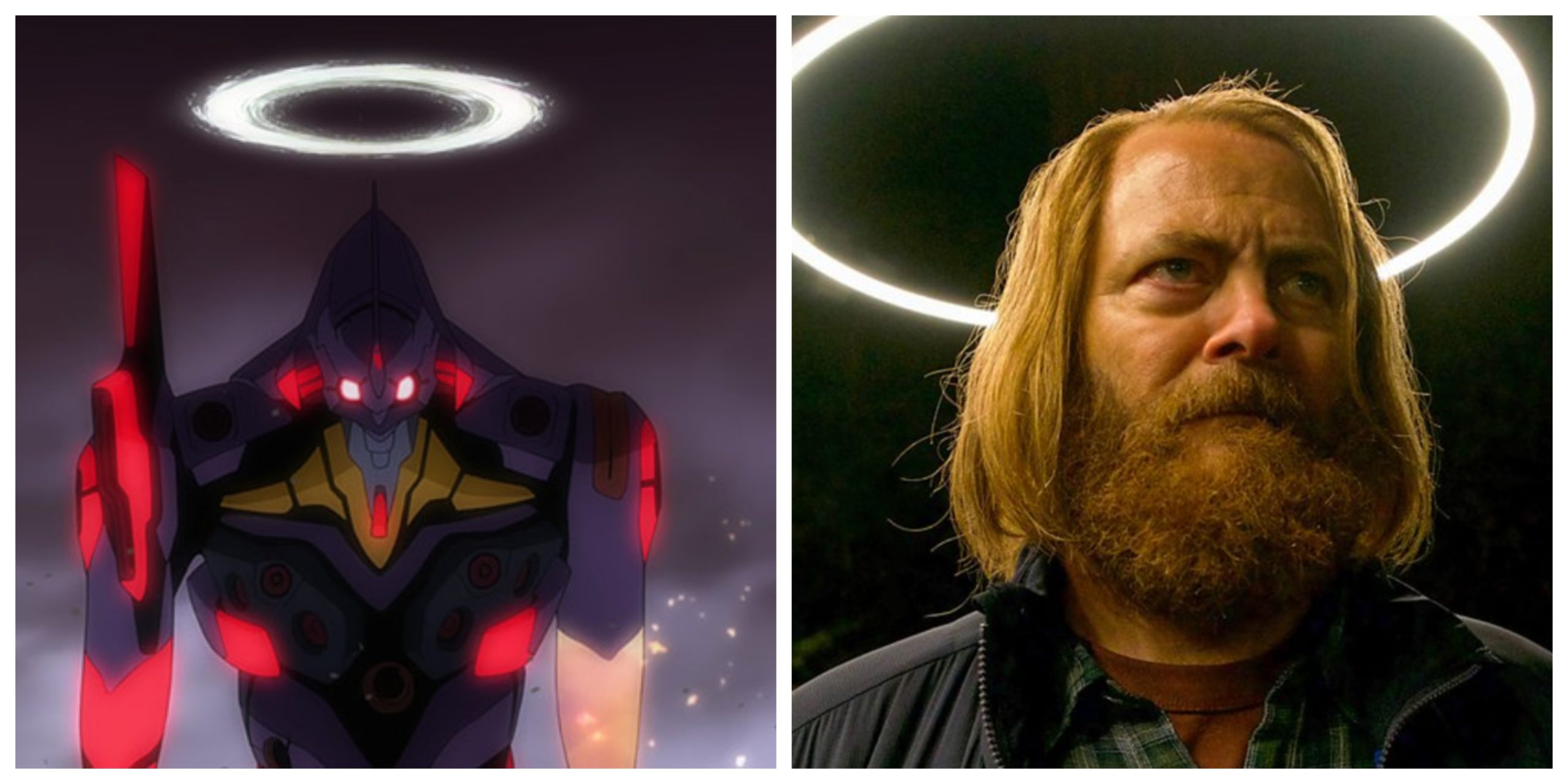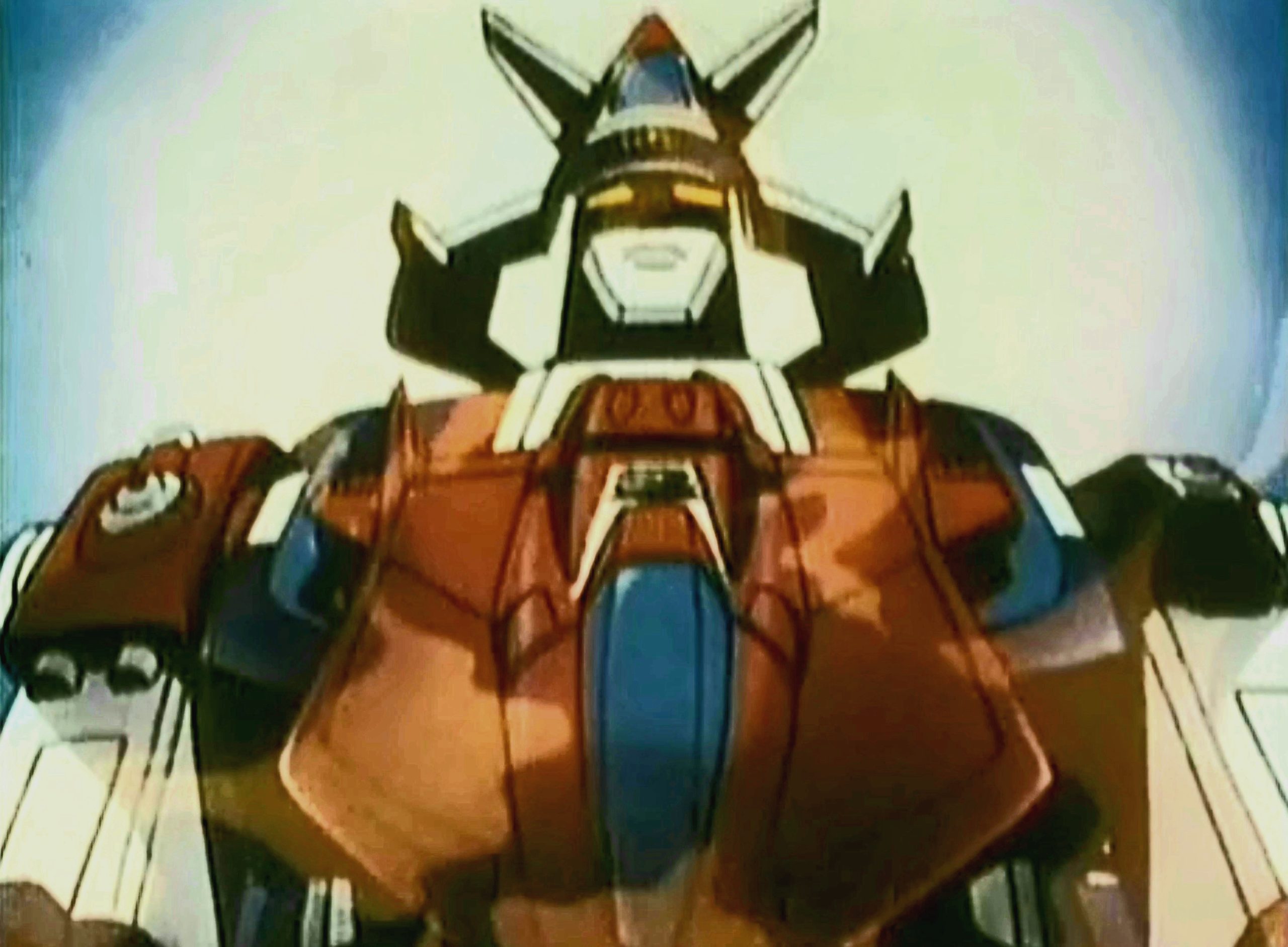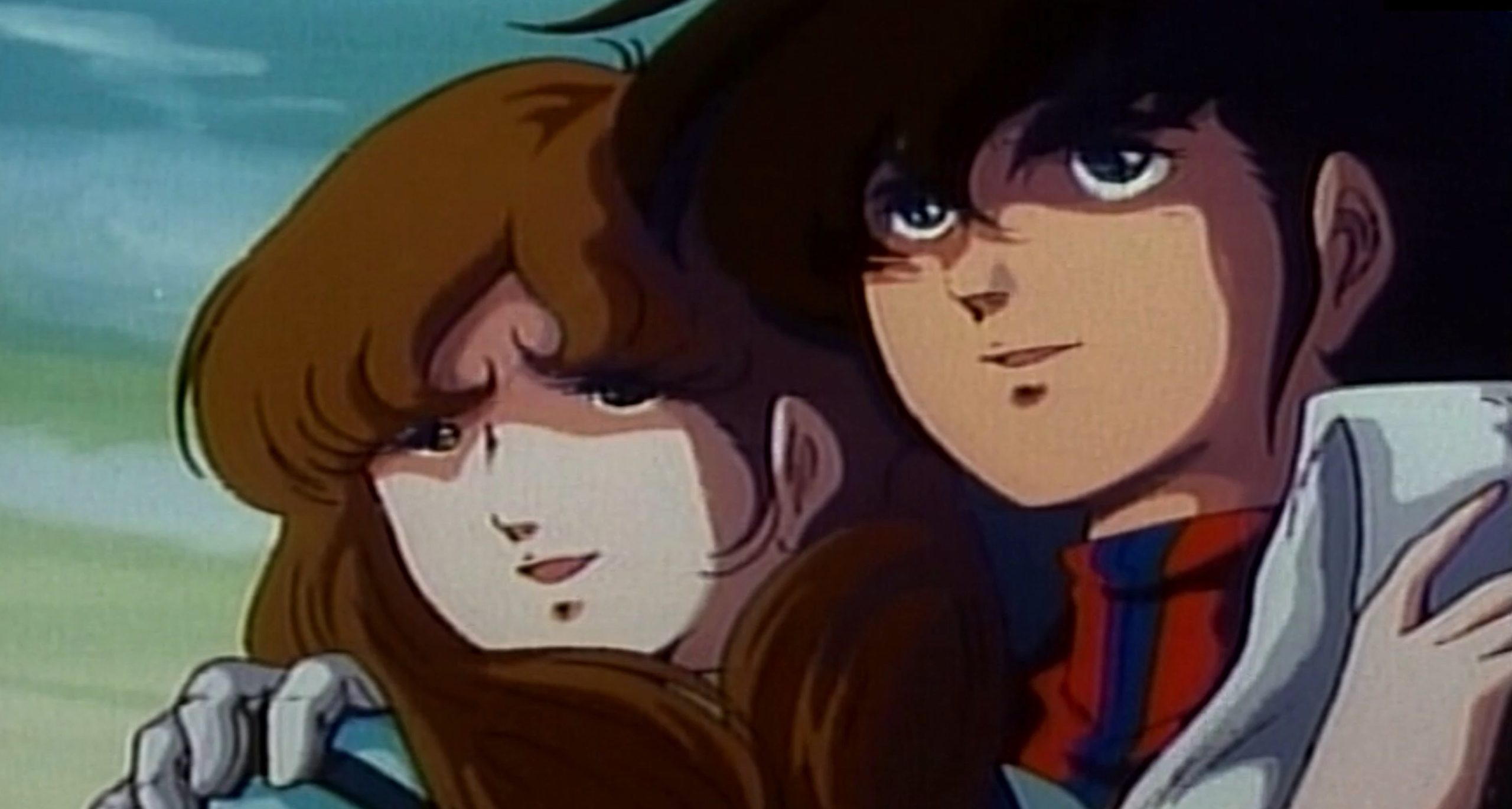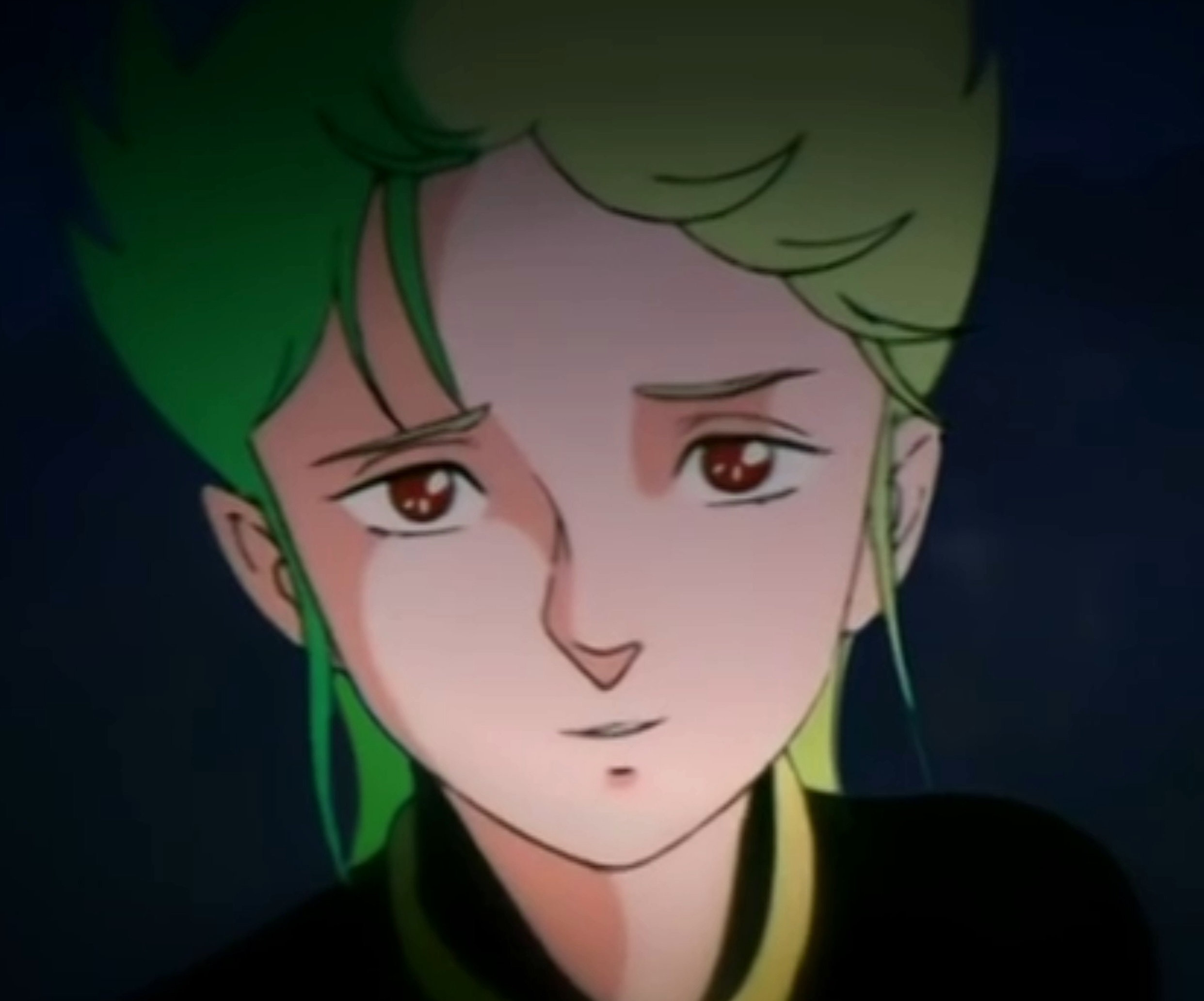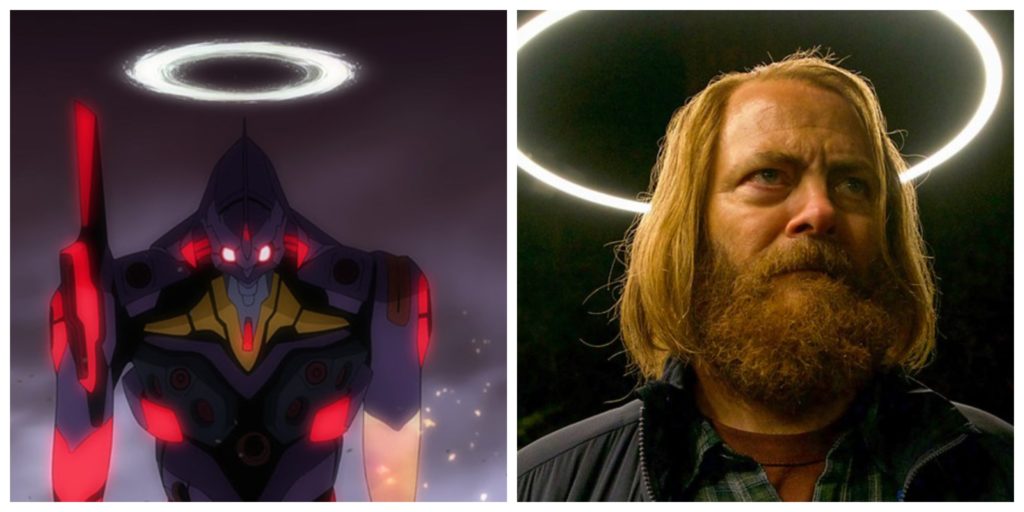
Whenever a ’90s anime influences a live-action film or TV series, we think that’s a cool thing. And we think that’s likely the case for Devs (2020), a sci-fi TV series written and directed by filmmaker Alex Garland (also known for 2017’s Ex Machina and 2018’s Annihilation). The anime in question? 1995’s Neon Genesis Evangelion. Devs is a series about determinism vs free will, and utilizes a lot of religious imagery and symbolism like halos, crosses, and biblical references. Evangelion did it first however, and contains thematic elements that reappear in Devs. Are these elements easter eggs or simply coincidence?
We think Alex Garland is likely an Evangelion fan, and we’re making our five point case below:
– Spoiler Warning –
*** If you have NOT seen Evangelion OR Devs (and want to) do not read beyond this point ***
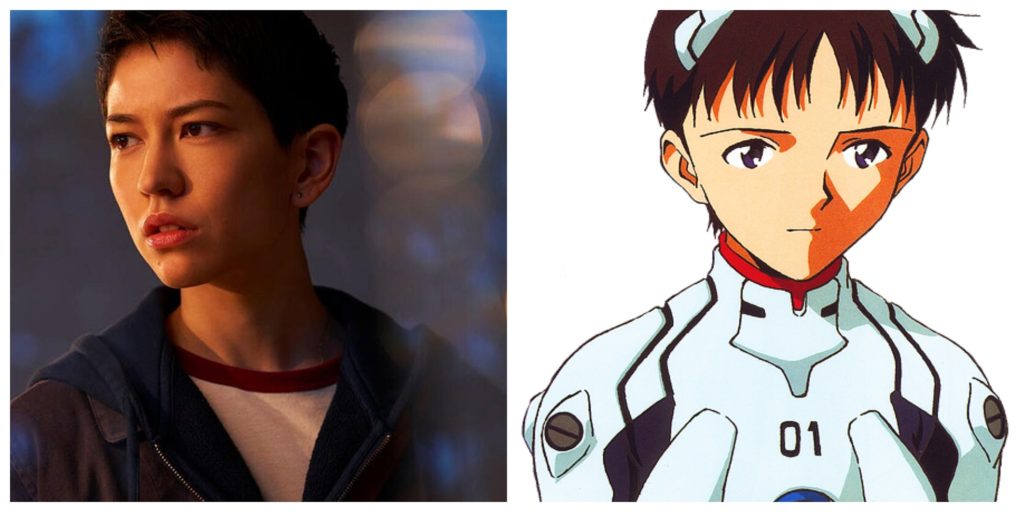
In Devs (taking place in the near future), we are introduced to Lily Chan, our awkward, boyish, and brooding introvert protagonist who finds herself pulled into the machinations of Amaya, a Silicon Valley tech giant and its shadowy development division, Devs. Lily ends up becoming so important to the story, by the climax, the fate of the universe appears to ride on a series of choices that Lily, and ONLY Lily can make.
In Neon Genesis Evangelion (taking place in a near future), we are introduced to Shinji Ikari, our awkward, boyish, and brooding introvert protagonist who finds himself pulled into the machinations of NERV, a paramilitary organization, and its shadowy backing organization called SEELE. Shinji ends up becoming so important to the story, by the climax, the fate of humanity appears to ride on the choices that Shinji, and ONLY Shinji can make.
In the end, both Lily and Shinji find themselves reborn in rebooted settings. While hinted at in Evangelion and explicitly stated in Devs, both protagonists are able to exist beyond death within subsequent multiple universes/timelines.
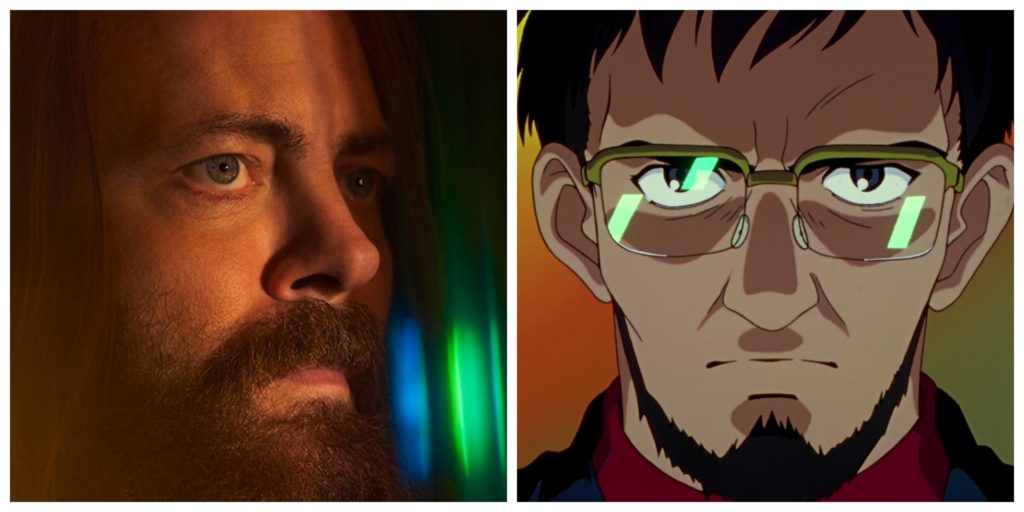
In Devs, Nick Offerman shines as Forest, the stoic, obsessed, secretive mastermind CEO of Amaya, and the leader of its clandestine Devs division. As the show progresses, we come to learn that Forest is grieving the tragic loss of his wife and young daughter. Naturally, Forest intends to use Devs technology to reunite with his wife and daughter, and will stop at nothing to achieve his goals.
In Neon Genesis Evangelion, Gendo Ikari is the stoic, obsessed, secretive mastermind head of NERV, a paramilitary organization backed the clandestine SEELE council. As the show progresses, we come to learn that Gendo is grieving the tragic loss of his wife. Naturally, Gendo intends to use Evangelion technology to reunite with his wife, and will stop at nothing to achieve his goals.
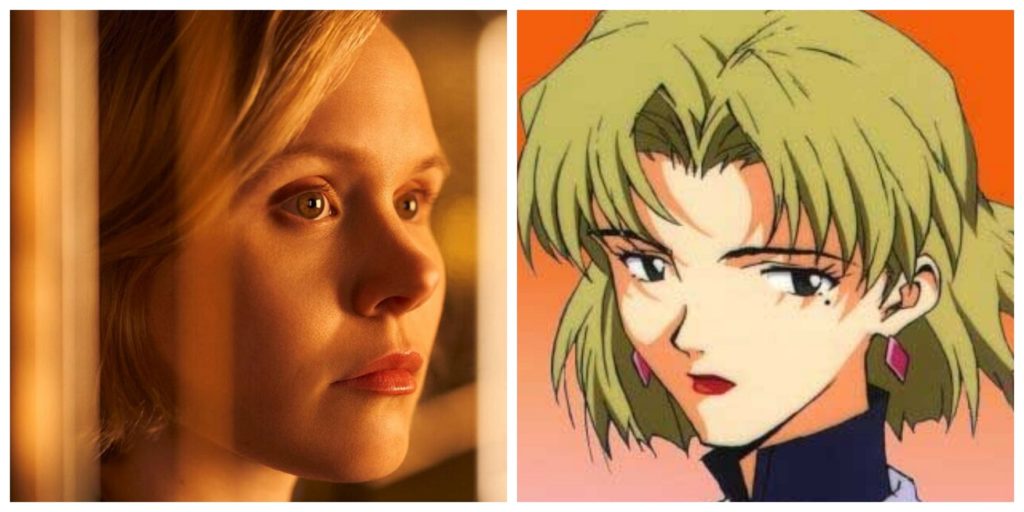
In Devs, Alison Pill plays Katie, a reserved, trusty, blonde scientist assistant to Forest, and we come to learn towards the end of Devs that she is also in a relationship with Forest. Katie is indispensable to Devs and plays her cards extremely close to the vest. Katie’s approach to the Devs project involves great personal sacrifice, and is indicative of her utter dedication to Forest.
In Evangelion, Ritsuko Akagi is a reserved, trusty blonde scientist assistant to Gendo, and we come to learn towards the end of Evangelion that she is also in a relationship with Gendo. Ritsuko is indispensable to NERV and plays her cards extremely close to the vest. RItsuko’s approach to NERV involves great personal sacrifice, and is indicative of her utter dedication to Gendo (that is, until he betrays her).

Both Devs and Evangelion deliver shocking brutal deaths of significant characters, and especially towards the end, have no problem showing the viewer that just when you thought things couldn’t get any worse, they most certainly do. As depicted above, the dead bodies of Misato Katsuragi (Evangelion), Lyndon (Devs) and Ritsuko Akagi (Evangelion) are shown in quick stills that are graphic, lonely, and utterly depressing. Truth be told, it was that unceremonious shot of Lyndon’s dead body from the penultimate episode of Devs that convinced us that Alex Garland just might be an Evangelion fan.
And finally…there’s this image:
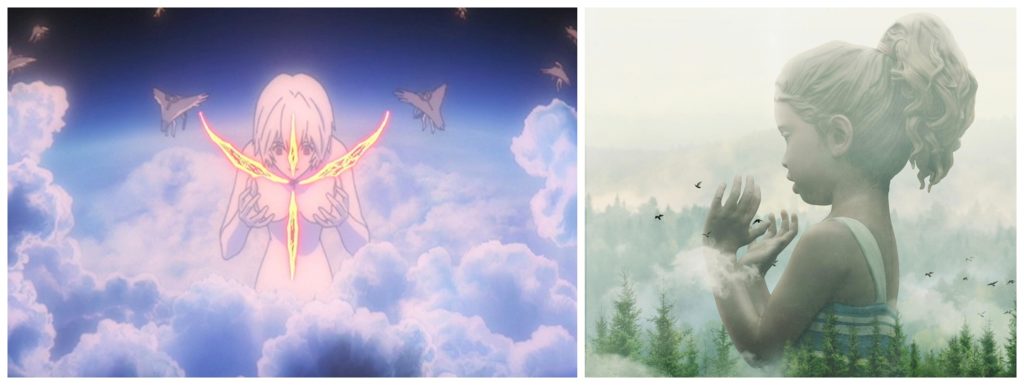
The similarities between the giant version of Rei from 1997’s End of Evangelion feature film and the giant Amaya statute from Devs are striking. Both of them seem to have a) their arms and hands in very similar poses, b) they are both looming among clouds, and c) both have winged creatures flying around them.
In combination of all the parallels we’ve laid out previously between the use of halos and religious references, Lily/Shinji, Forest/Gendo, Katie/Ritsuko, and the shocking brutal deaths, we think there’s definitely a compelling case to be made for Evangelion’s influence on Devs.
What do you think? Leave a comment below!
